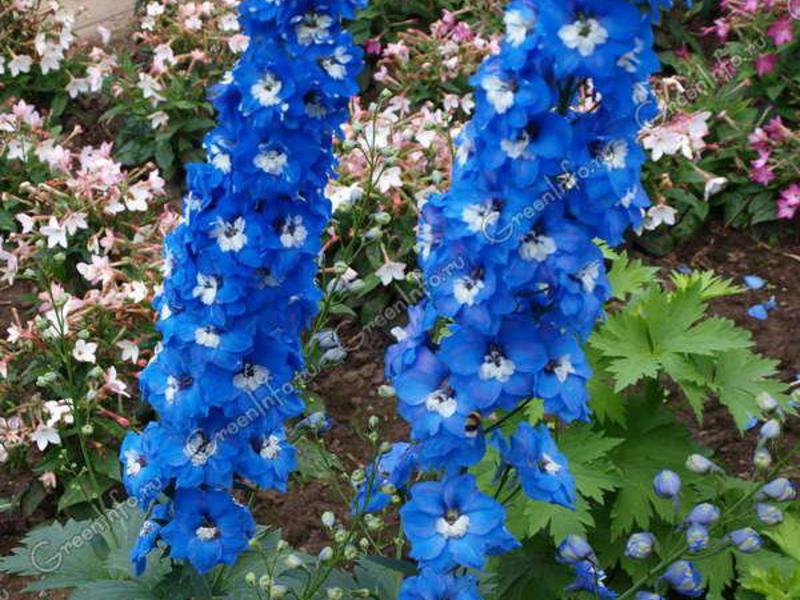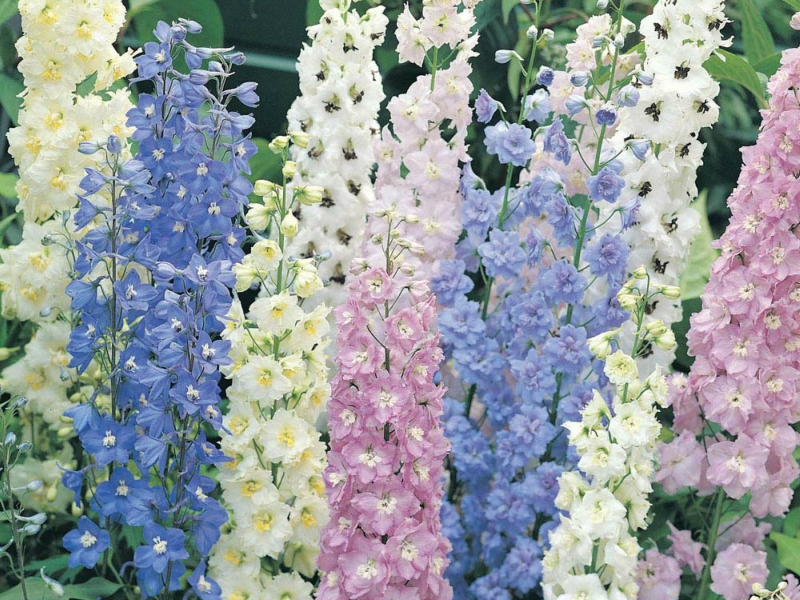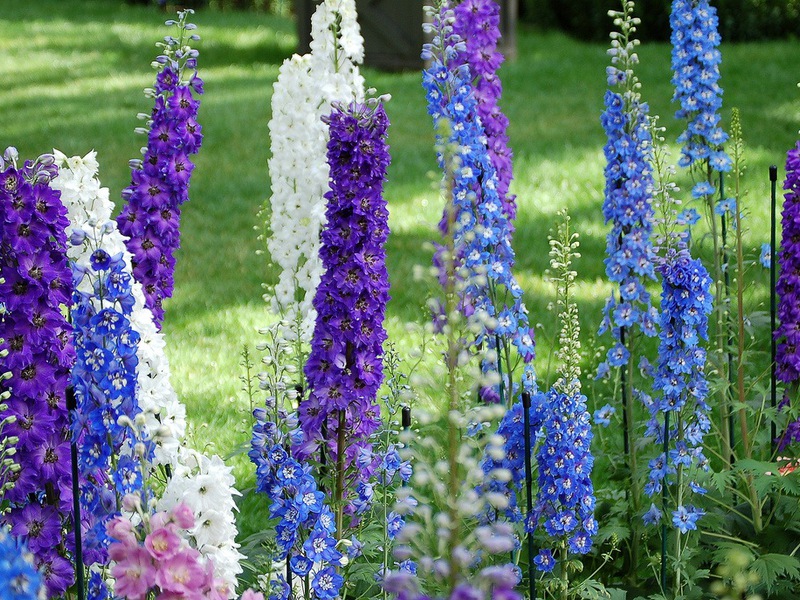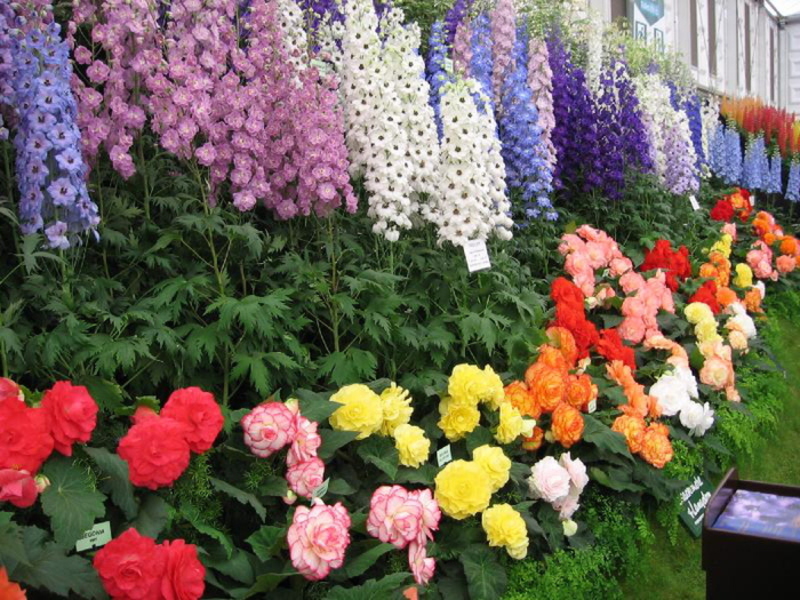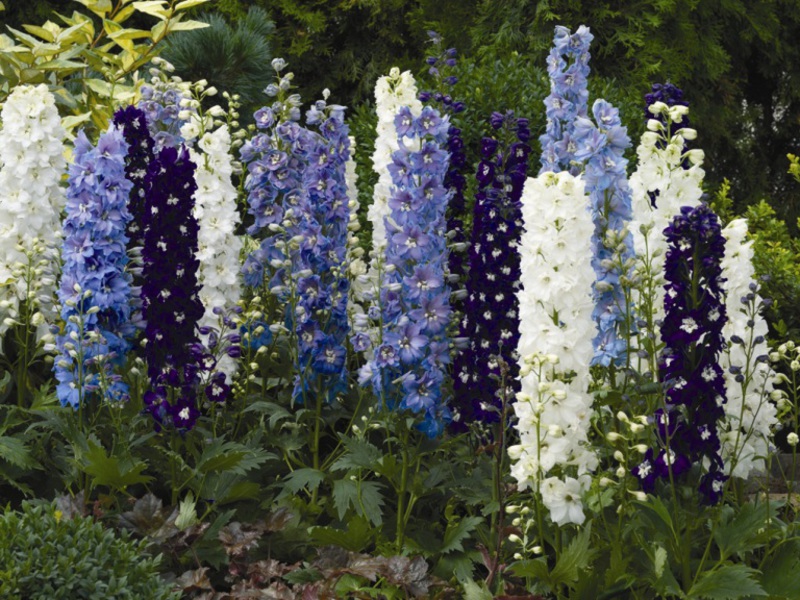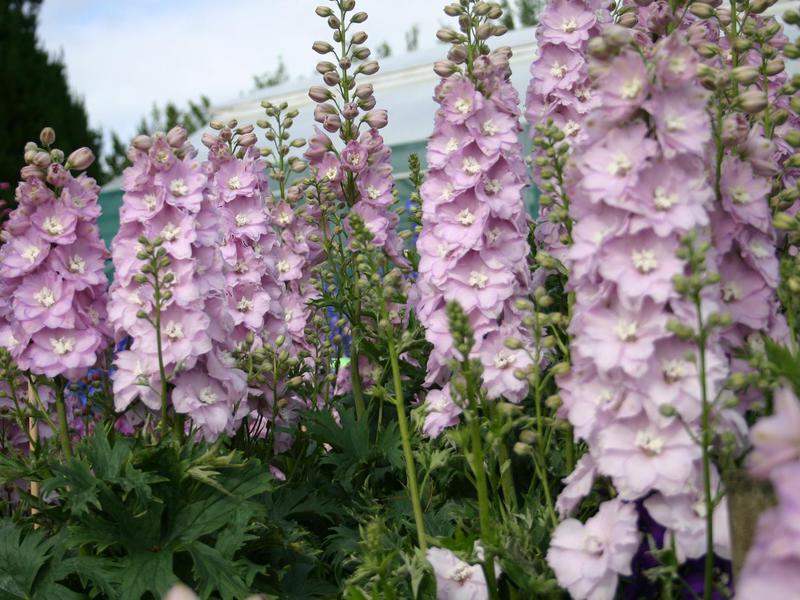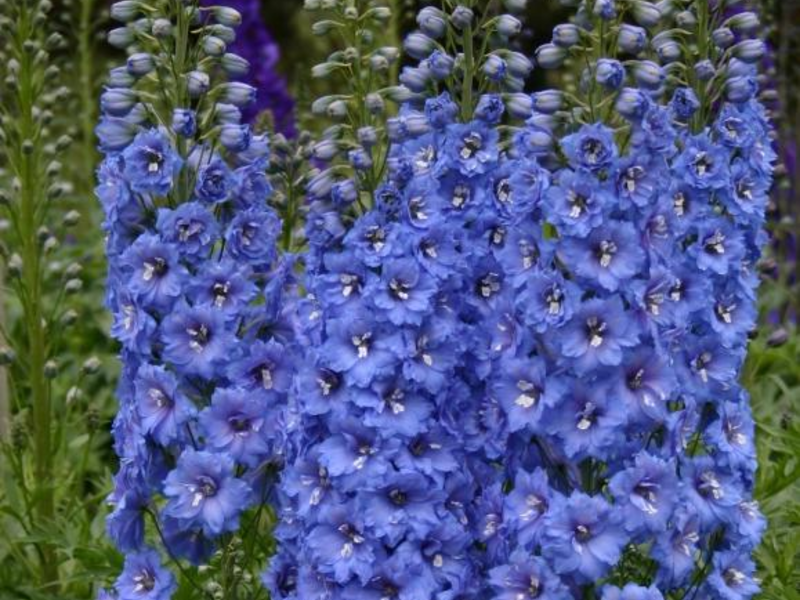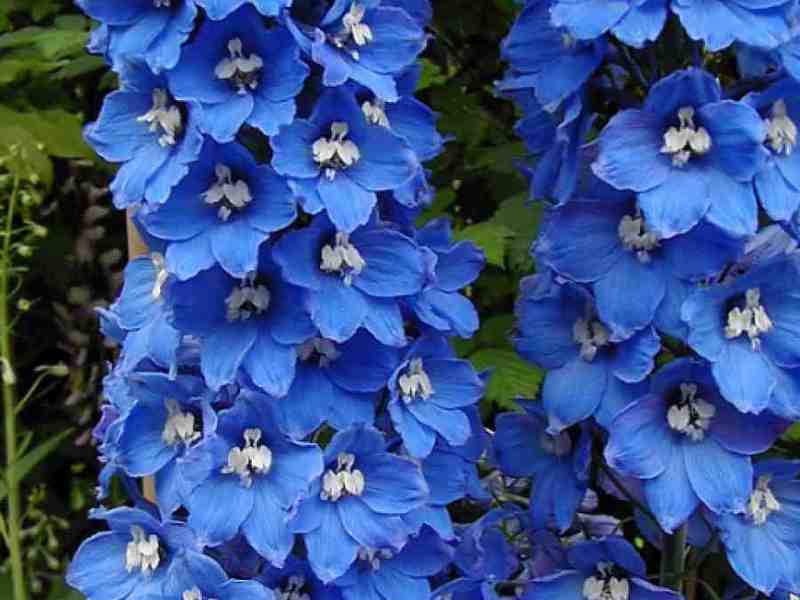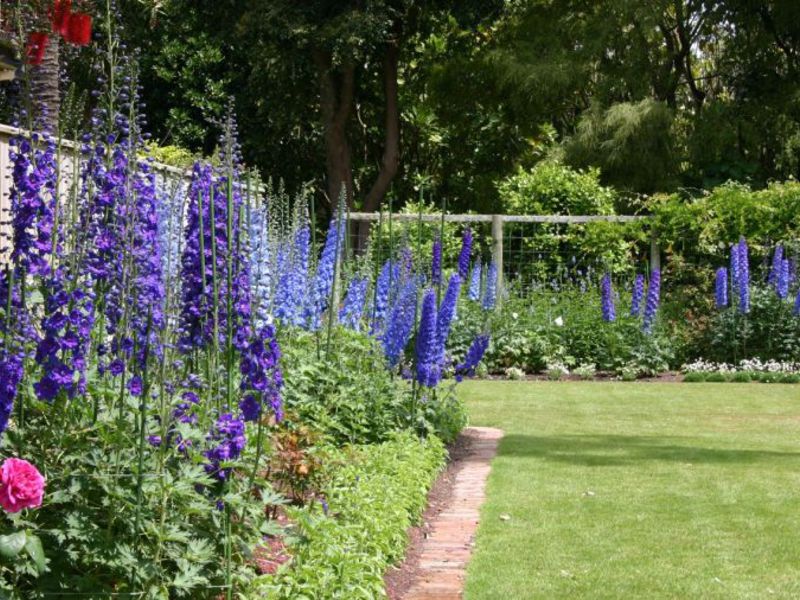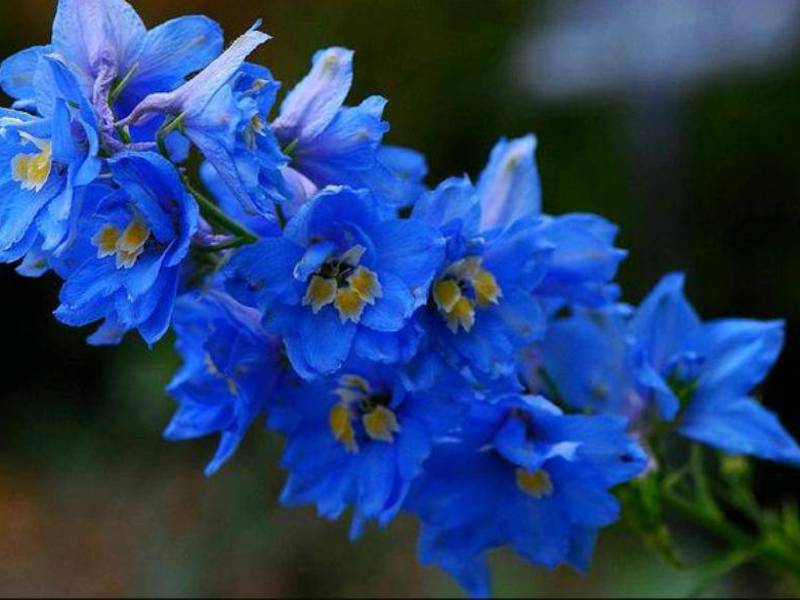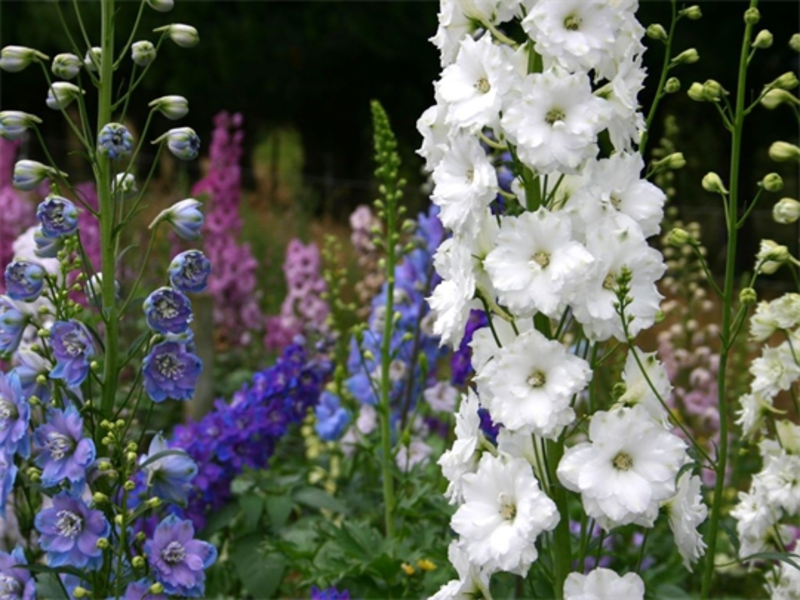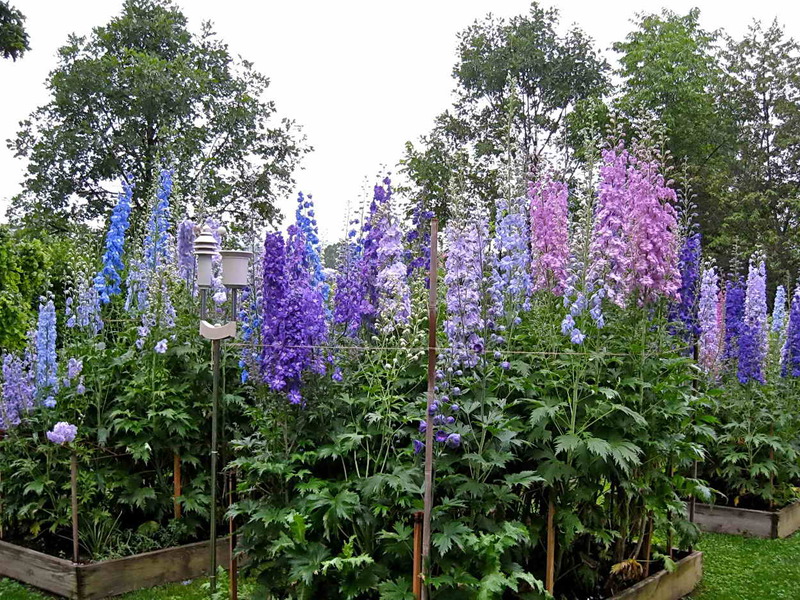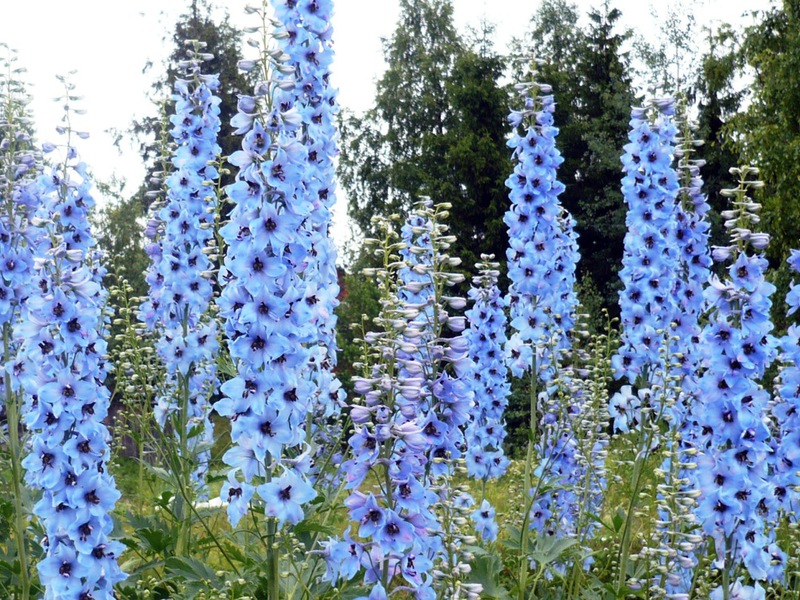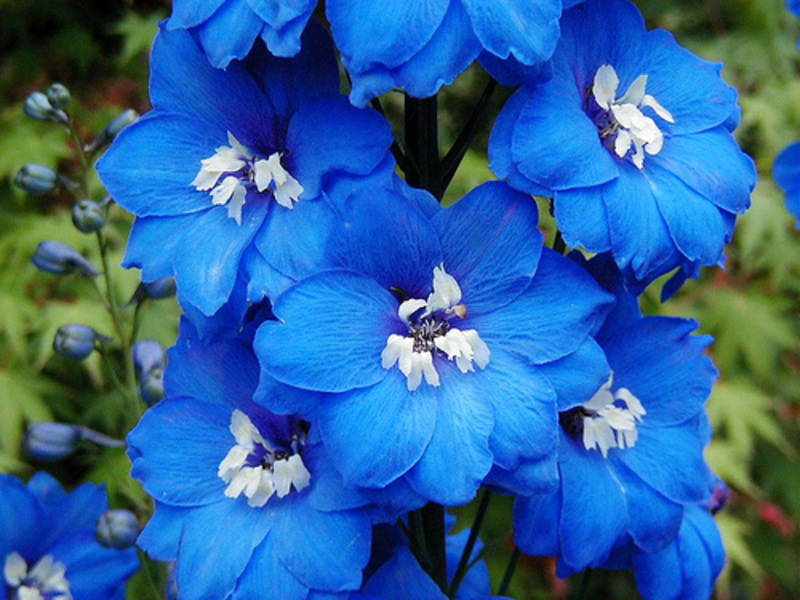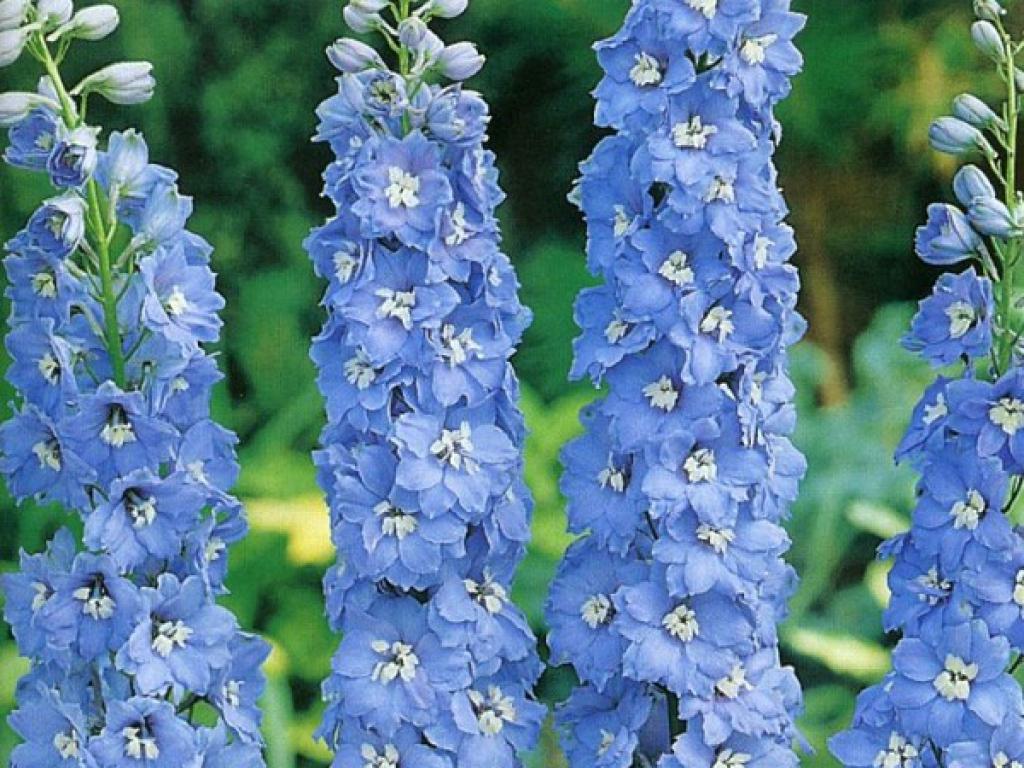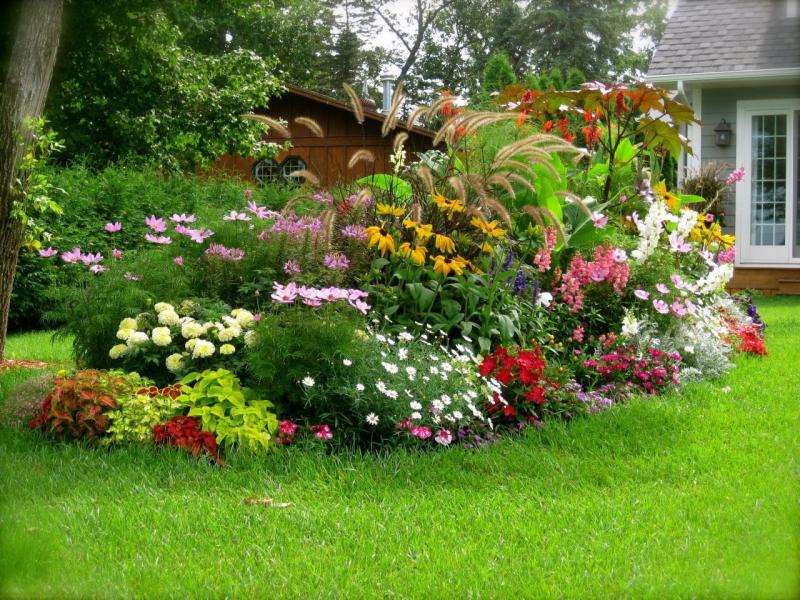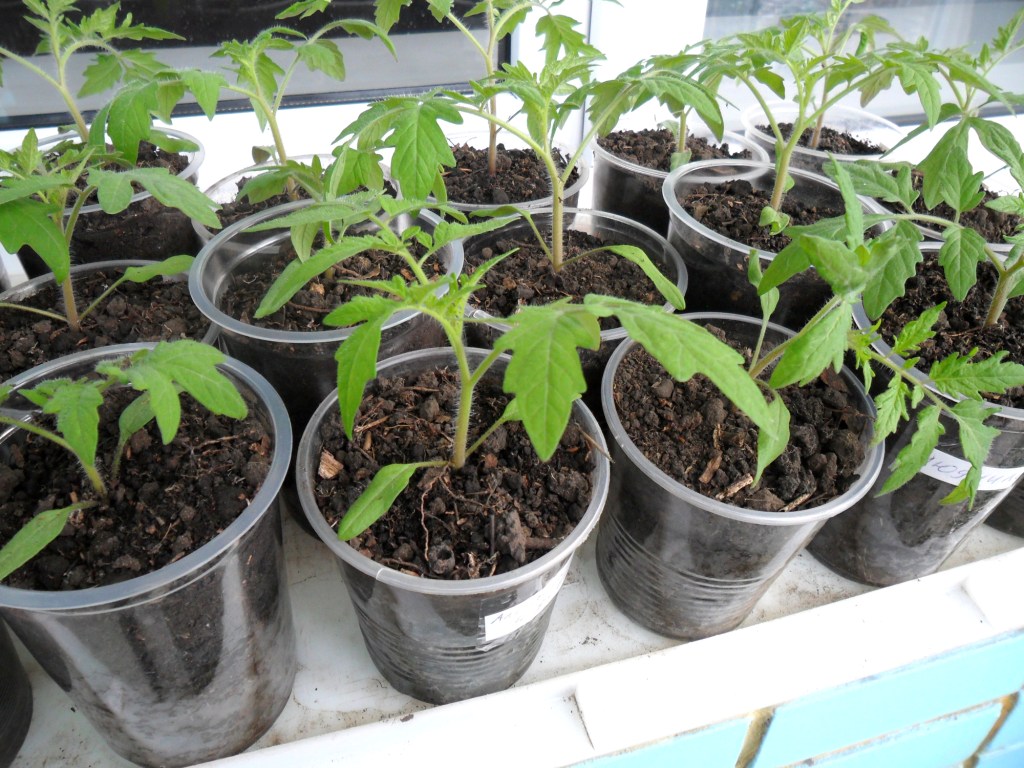Delphinium is a variety of herbaceous plants of the buttercup group; it also has the names spurnik and larkspur. There are about 500 varieties of perennial and annual plants. Annual delphiniums, which include about 50 varieties, are often distinguished into an adjacent group and are called picks.
Many people think that the unblown delphinium is a flower that looks like a dolphin's head, hence the name, but there is an opinion that the delphinium plant got its name in honor of the city of Delphi, located in Greece, where they are said to have grown in great numbers. Be that as it may, any gardener will agree that this beautiful flower will decorate every front garden.
Content
Delphinium flower: photo and description
Growing a delphinium is a rather complicated business that will require labor and knowledge. First of all, the landing site must certainly be sunny at the beginning of the day and closed from drafts, as well as located on an area in which moisture does not stagnate, otherwise the flower will simply die.
After landing, be sure to mulching with humus or peat... On one site, delphiniums can grow no more than 6-7 years, and Pacific varieties no more than 4-5, after which the bushes must be divided and transplanted. Flowers need multiple garters to keep their hollow stems from breaking in the wind. In addition, delphinium is often prone to powdery mildew infection and some other types of harmful insects. But if you can fulfill all the vagaries of planting a delphinium, then it will certainly reward you with a long and lush flowering in early summer and another, shorter, but also beautiful, in early autumn.
Annual delphiniums
Delphiniums can be perennial or annual. Of the annuals, the most popular varieties are the Ajax delphinium and the field delphinium.
Field delphinium
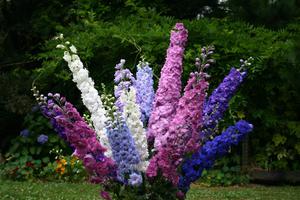 Tall bush, can reach up to 2 meters. Flowers in buds are double or simple, white, pink, blue or lilac. The views look quite impressive:
Tall bush, can reach up to 2 meters. Flowers in buds are double or simple, white, pink, blue or lilac. The views look quite impressive:
- Frosted Sky (blue flowers with a white center);
- Dark blue Qis Dark Blue;
- Delicate pink Qis Rose.
The plant blooms from late spring to late summer.
Delphinium Ajax
It is a hybrid of the Eastern and Doubtful delphinium, which received their best qualities after selection. The stem of this variety is from 50 cm to 1.1 m in size, almost sessile leaves have a strong dissection, spike-shaped flowers that reach a length of 35 cm can be of a variety of shades: red, purple, pink, blue, white and blue. In some species, inflorescences are densely double. There are dwarf species, for example, as Dwarf hyacinth flowered, the size of this bush is up to 25 cm with double buds of pink, purple, white and crimson shades. The plant blooms until the first frost.
Perennial delphiniums
The cultivation of perennial plants in culture began in the 19th century: breeders on the basis of Delphinium tall and Delphinium large-flowered by crossing created the first hybrids (Delphinium Belladonna, Delphinium Beautiful and Delphinium Barlow), and then Frenchman Victor Limuan created terry varieties of perennials of laurel, blue and purple called beautiful or "hybrid", and then renamed "cultural". Now perennial delphiniums in their color range have more than 850 colors. Among these plants there are undersized, medium-sized and tall varieties with semi-double, simple, super-double and double flowers, having a circumference of 3-10 cm.
Hybrid perennial plants are divided into groups according to their place of birth. Most popular Scottish terry, New Zealand and Marfin terry delphiniums, which were named after the collective farm "Marfino". All varieties have their own differences and advantages. Marfinsky, for example, have good resistance to frost and high decorativeness, these plants have semi-double and large flowers with contrasting and bright eyes. But it is very difficult to grow a Marfinsky variety from seeds, since the seeds do not retain varietal properties.
The New Zealand species, bred relatively recently, is characterized by large growth (up to 2.3 m), large double or semi-double buds (8-10 cm in circumference), in some varieties, corrugated petals. These hybrids are frost-hardy, disease-resistant, excellent cut, durable, and for this reason they are now the most popular.
The creator of Scottish hybrid perennials is Tony Cockley. These varieties are characterized by rather dense inflorescences of double and super-double buds, often numbering more than 60 petals. With a bush size of 1.2-1.6 m inflorescence can reach a length of 85 cm! "Scots" have a large palette of colors, are durable, unpretentious in care and perfectly retain varietal properties during seed propagation.
Growing with delphinium seeds
Sowing delphinium
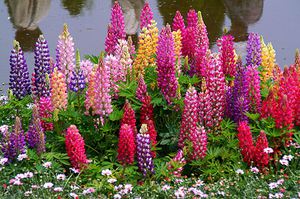 Delphinium can multiply not only by seeds, but also by cuttings, buds and division, but in this article we will consider how a delphinium is grown from seeds. The delphinium is sown in early March. Remember: storing seeds in a warm and dry room will not germinate. Fresh seeds must be sown immediately or stored in the refrigerator until the required time.
Delphinium can multiply not only by seeds, but also by cuttings, buds and division, but in this article we will consider how a delphinium is grown from seeds. The delphinium is sown in early March. Remember: storing seeds in a warm and dry room will not germinate. Fresh seeds must be sown immediately or stored in the refrigerator until the required time.
Planting seeds for seedlings
Before sowing, you need to decontaminate seeds: placing them in a fabric bag, lower them for 20 minutes. into a solution of deep pink manganese. Instead of manganese, you can choose a fungicide by making a solution according to the instructions. After that, without taking the seeds out of the bag, rinse them thoroughly with warm water and fill with epin solution overnight (2 drops per 120 ml of water). Then dry the seeds so they don't stick together.
Prepare the land for seeds, for this:
- Take in equal parts humus, garden soil and peat;
- Pour in half a piece of clean sand;
- Sift.
To increase the looseness of the soil and moisture capacity, add perlite to the ground in a ratio of 0.5 cups to 5 liters of soil composition. Then heat the compound for 60 minutes. in a steam bath to remove fungal spores and weed seeds. Fill seed containers with the compound and tamp it down a little.
Sowing seeds
Planting seeds happens this way:
- Spread the seeds on the surface of the ground, immediately attaching the inscriptions with the name of the variety and the planting time.
- Top up the seeds with soil about 4 mm so that the seeds do not float during watering, tamp the top layer a little.
- Spray the surface gently with warm water.
Cover the container with transparent material, and then with a black film, since seeds develop better in the dark, and place the container on the windowsill closer to the glass itself.
The best temperature for seed growth is + 11-16C. To increase germination, after a few days, place the container in the refrigerator or on a glazed loggia and do not worry if the temperature here at night will drop to -6C... After two weeks, rearrange the container with seeds on the windowsill. After these manipulations, the seedlings should appear in 1-2 weeks, and try not to miss this time in order to immediately remove the film. Remember to ensure that the soil does not dry out, wet it periodically and ventilate the container to remove condensation.
Delphinium seedlings
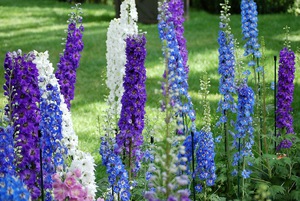 Healthy seedlings are strong, rich green, their cotyledons are significantly pointed. When the seedlings have several leaves, you can dive the flowers into pots of 250-350 ml with their further growing at a temperature of no more than 21C. The earth must be breathable and loose, watering is moderate, so that a "black leg" does not form, it can lead to the death of seedlings.
Healthy seedlings are strong, rich green, their cotyledons are significantly pointed. When the seedlings have several leaves, you can dive the flowers into pots of 250-350 ml with their further growing at a temperature of no more than 21C. The earth must be breathable and loose, watering is moderate, so that a "black leg" does not form, it can lead to the death of seedlings.
Since the end of April, slowly accustom the seedlings to fresh airwithout removing from the window sill when ventilating. Let the seedlings stand in the bright sun for a short time. Before transplanting, the seedlings are fed several times with an interval of 14 days with "Solution" or "Agricola" so that fertilizers do not fall on the foliage. The grown seedlings can be transplanted onto the open ground when the soil in the pot is completely entwined with roots - the seedlings are very easy to get along with the lump without damaging the roots.
Delphinium care
When the seedlings grow up to 12-16 cm, they are fed with a mullein mixture in the ratio of a bucket of manure to 11 buckets of water - to 6 large plants. After removing weeds and loosening the soil, the rows must be mulched with a layer of peat or humus about 3 cm. Thinning of flowers when leaving is done when the stems are 25-35 cm high: you need to leave 4-6 stems in the flower, this will make it possible to get more beautiful and large inflorescences.
Weak shoots of the inner part of the plant are removed by breaking them off near the ground. This will protect the flower from diseases and will allow air to penetrate... Cut cuttings, if not hollow and cut off at the heel, can be rooted. The cutting is treated with a mixture of crushed tablets of heteroauxin and charcoal, buried in a mixture of peat and sand and placed under the film. After a month, the cutting gives roots, and after another half a month it is transplanted, this is how propagation occurs by cuttings.
When the bush reaches half a meter in height, near the bush plant, trying not to damage the root system, they dig in 3 support rods up to 2 m in size, where the bush stems are tied with ribbons.
Throughout the growing season, each bush "consumes" up to 65 liters of water. Therefore, in a dry summer, it is necessary to pour several buckets of water under each plant once a week during care. When the soil dries up after watering, it is necessary to loosen it to a depth of 4-6 cm. Moreover, delphiniums require watering during the formation of inflorescences, and if heat comes during this period, then areas without flowers are formed in the inflorescence. To prevent this, abundant watering and feeding with phosphorus and potassium fertilizers are necessary.
Diseases and pests
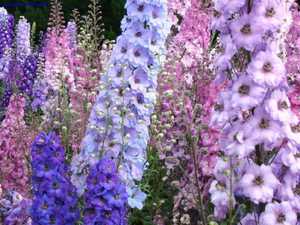 At the end of summer, flowers may form powdery mildew - fungal infectionthat covers the leaves with a white bloom. If measures are not taken in a timely manner, the plant will die. At the first manifestations, it is necessary to spray the bush twice with foundation or Topaz.
At the end of summer, flowers may form powdery mildew - fungal infectionthat covers the leaves with a white bloom. If measures are not taken in a timely manner, the plant will die. At the first manifestations, it is necessary to spray the bush twice with foundation or Topaz.
Often black spots form on the leaves of the delphinium, which spread out from the bottom of the plant. This is black spot, it can only be dealt with at an early stage by spraying the leaves with a mixture of tetracycline twice, in a ratio of 1 capsule per liter of water.
Infects plants and ring spotwhich covers the leaves with yellow blotches. This is a viral infection, it is impossible to get rid of it, and the infected bushes must be removed.But the carrier of the infection, aphids, must be removed: spray the flower with actellik or karbofos for prevention.
Of the pests, delphinium are scary: slugs and a delphinium fly, which lays eggs in inflorescences. The fly is removed with insecticides, and the slugs take away the smell of lime, it can be placed in containers between the plants.
Delphinium after flowering
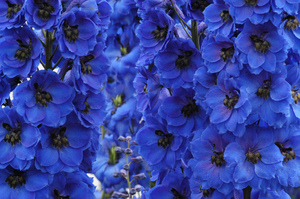 When the leaves dry after flowering, the stems of the plant are cut off at a height of 35-45 cm from the ground and, for reliability, their top is coated with clay. They do this so that rains in the autumn and melt water cannot get through the void to the root collar and do not contribute to the death of the flower from root decay. Practically all delphiniums are frost-resistant, both adult bushes and seedlings.
When the leaves dry after flowering, the stems of the plant are cut off at a height of 35-45 cm from the ground and, for reliability, their top is coated with clay. They do this so that rains in the autumn and melt water cannot get through the void to the root collar and do not contribute to the death of the flower from root decay. Practically all delphiniums are frost-resistant, both adult bushes and seedlings.
If the winter is snowless and frosty, then the beds with plants must be covered with straw or spruce branches. Only sharp and frequent temperature changes can destroy the delphinium, as they lead to excessive moisture, from which the roots rot. The best way to prevent this is to pour 0.5 buckets of sand at the bottom of the pit during planting so that excess water can go out through it.
You may immediately think that dealing with a delphinium, especially growing this plant from seeds, is a very difficult matter, but if you are not afraid of trouble and spend a little effort and your personal time, then the results will simply surpass any expectations.
